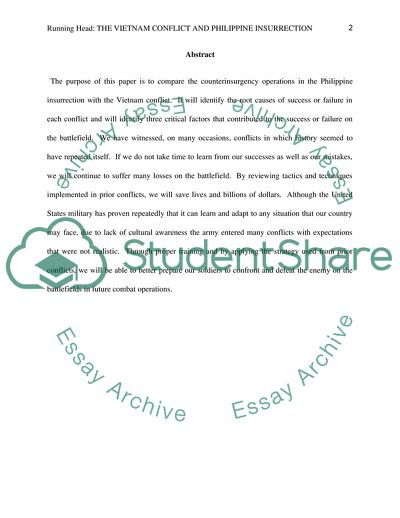Cite this document
(The Vietnam Conflict and the Philippine Insurrection Essay Example | Topics and Well Written Essays - 1250 words, n.d.)
The Vietnam Conflict and the Philippine Insurrection Essay Example | Topics and Well Written Essays - 1250 words. https://studentshare.org/military/1778510-comparecontrast-vietnam-conflict-and-philippine-insurrection
The Vietnam Conflict and the Philippine Insurrection Essay Example | Topics and Well Written Essays - 1250 words. https://studentshare.org/military/1778510-comparecontrast-vietnam-conflict-and-philippine-insurrection
(The Vietnam Conflict and the Philippine Insurrection Essay Example | Topics and Well Written Essays - 1250 Words)
The Vietnam Conflict and the Philippine Insurrection Essay Example | Topics and Well Written Essays - 1250 Words. https://studentshare.org/military/1778510-comparecontrast-vietnam-conflict-and-philippine-insurrection.
The Vietnam Conflict and the Philippine Insurrection Essay Example | Topics and Well Written Essays - 1250 Words. https://studentshare.org/military/1778510-comparecontrast-vietnam-conflict-and-philippine-insurrection.
“The Vietnam Conflict and the Philippine Insurrection Essay Example | Topics and Well Written Essays - 1250 Words”. https://studentshare.org/military/1778510-comparecontrast-vietnam-conflict-and-philippine-insurrection.


